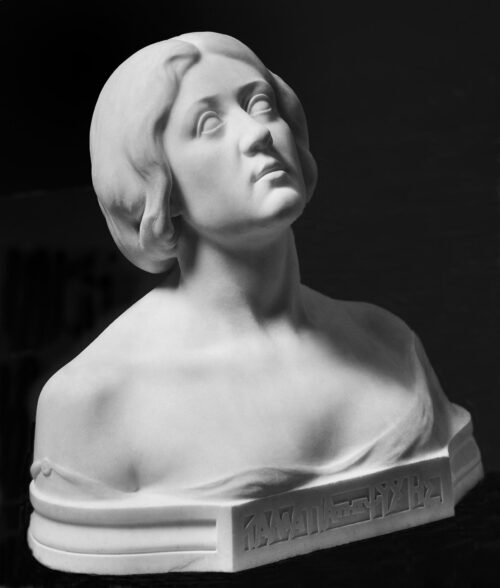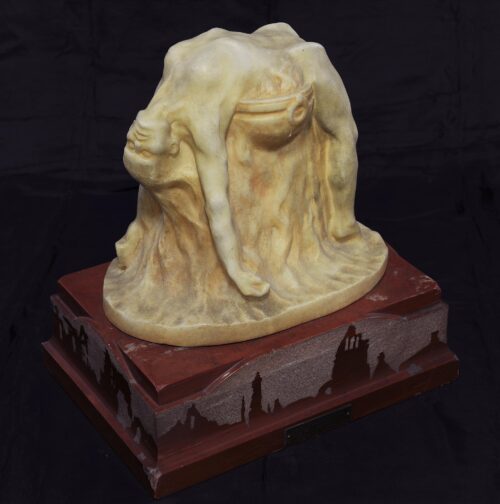
Thomopoulos Thomas (1873 - 1937)
Centaur, 1901
He first studied painting at the School of Arts with Nikiforos Lytras and sculpture with Georgios Vroutos; he went on to S. Eberle’s workshop and the Munich Academy, where he attended composition classes. He visited and studied museums in Florence, Rome and Naples. Returning to Greece in 1900, he established a workshop; in 1910, he had courses at K. Konstantinidis’s workshop. In January 1912, he was appointed professor at the School of Arts and remained in this post throughout his life. His contribution to the preservation of Yannoulis Chalepas’s works was substantial: He visited the island of Tinos in 1922, leading a Ministry of Education team, in order to cast in plaster the works of Chalepas’s latest period. In 1930, he was elected regular member of the Academy of Athens.
His exhibition activity includes solo and group exhibitions, including events at the Parnassos Hall and exhibitions by the Greek Society of Artists, as well as the Venice Biennale (1934); a tribute to his work was held during the 1948 Panhellenic exhibition.
His apprenticeship with Georgios Vroutos accounts for the neoclassicist qualities in his work; moreover – even in his earliest works – the evident preference to mythological and allegorical subjects suggests his affinity with neo-idealist and symbolist trends, with which he had come into contact during his studies in Munich. Thomopoulos, however, is not limited to these, as his oeuvre is informed by an eclectic attitude. Thus, romantic qualities can also be felt, such as his endeavour to capture passion, or his flowing outlines, originating in Rodin, along with realistic qualities, mainly in his busts. His greatest innovation was his coloured sculptures, which he introduced in the 1900’s.

Centaur, 1901

The Eyes of the Soul, 1900

Self-sacrifice, 1901

We use cookies to make our site work properly, to personalize content and ads, to provide social media features and to analyze our traffic. We also share information about how you use our site with our social media, advertising and analytics partners. Read the Cookies Policy.
These cookies are necessary for the website to function and cannot be switched off in our systems. They are usually only set in response to actions made by you which amount to a request for services, such as setting your privacy preferences, logging in or filling in forms. You can set your browser to block or alert you about these cookies, but some parts of the site will not then work. These cookies do not store any personally identifiable information.
If you disable this cookie, we will not be able to save your preferences. This means that every time you visit this website you will need to enable or disable cookies again.
These cookies tell us about how you use the site and they help us to make it better. For example these cookies count the number of visitors to our website and see how visitors move around when they are using it. This helps us to improve the way our site works, for example, by ensuring that users find what they are looking for easily. Our website uses Google Analytics for statistics reporting.
Please enable Strictly Necessary Cookies first so that we can save your preferences!